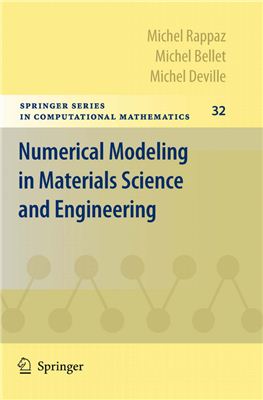Springer, 2010. - 540 pages.
This book introduces the concepts and methodologies related to the modelling of the complex phenomena occurring in materials processing. After a short reminder of conservation laws and constitutive relationships, the authors introduce the main numerical methods: finite differences, finite volumes and finite elements. These techniques are developed in three main chapters of the book that tackle more specific problems: phase transformation, solid mechanics and fluid flow. The two last chapters treat inverse methods to obtain the boundary conditions or the material properties and stochastic methods for microstructural simulation. This book is intended for undergraduate and graduate students in materials science and engineering, mechanical engineering and physics and for engineering professionals or researchers who want to get acquainted with numerical simulation to model and compute materials processing.
This book introduces the concepts and methodologies related to the modelling of the complex phenomena occurring in materials processing. After a short reminder of conservation laws and constitutive relationships, the authors introduce the main numerical methods: finite differences, finite volumes and finite elements. These techniques are developed in three main chapters of the book that tackle more specific problems: phase transformation, solid mechanics and fluid flow. The two last chapters treat inverse methods to obtain the boundary conditions or the material properties and stochastic methods for microstructural simulation. This book is intended for undergraduate and graduate students in materials science and engineering, mechanical engineering and physics and for engineering professionals or researchers who want to get acquainted with numerical simulation to model and compute materials processing.

